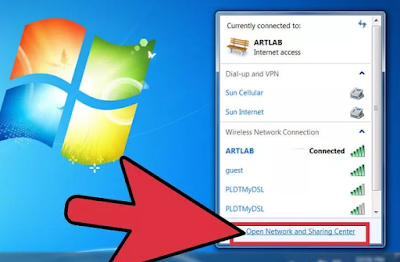Do you need to give your wireless
password to a friend or guest, but can't remember it? Are you locked out of
your own network because your computer decided to forget the password? If you
need to retrieve your wireless password, you have a couple of different
options, or you can reset your router and start from scratch. See Step 1 below
to learn how.
Open the Network Connections window. Windows saves
the passwords for the networks that you connect to. To see your saved
passwords, open the Network Connections window by right-clicking on your
network icon in the System Tray and selecting "Open Network and Sharing
Center". Click the "Change adapter settings" link in the left
menu.
· Alternatively,
you can press the Windows key + R, type ncpa.cpl,
and press Enter to open the window.
Right-click on your wireless adapter. This may be labeled "Wi-Fi", or it
may have the manufacturer's name. Select "Status" from the menu.
Open the connection's Properties window. Click Wireless Properties, and then click the Security tab.
Reveal the characters. Check the "Show Characters" box and your wireless
password will be displayed. If you don't have the option to reveal the
characters, move on to the next step.
Download WirelessKeyView. This is a freeware program from
NirSoft that scans your Windows registry and extracts all the saved wireless
keys. It does not work for Mac OS X. You can download WirelessKeyView for free
from the NirSoft website.
· WirelessKeyView
comes in a ZIP file which will need to be extracted. WirelessKeyView
does not need to be installed.
Run the program. Open
the WirelessKeyView program and run the application. The WirelessKeyView window
will open.
Locate your password. All of the network names that you
have connected to with your computer will be displayed in the left column.
Locate the network that you want to retrieve the key for, and then look at the
"Key (Ascii)" column. This is the wireless password for that network.
· In
Windows XP, a WPA-PSK key cannot be displayed in ASCII format. Instead, use the
key from the Hex column. This key will work just like the regular ASCII key,
but will be significantly longer. (from wikihow.com)

No comments:
Post a Comment